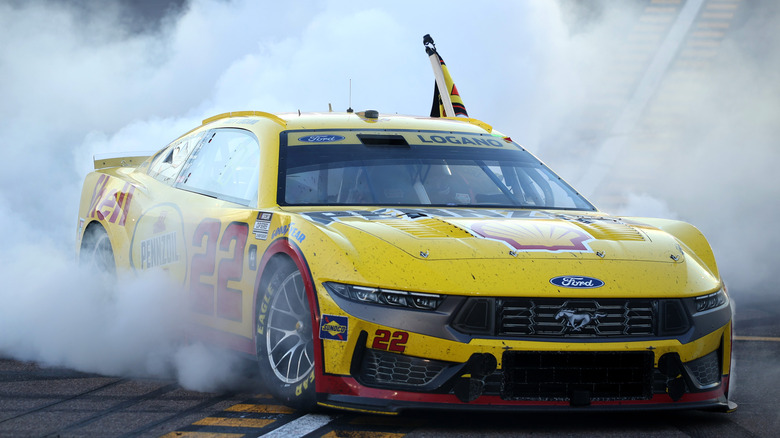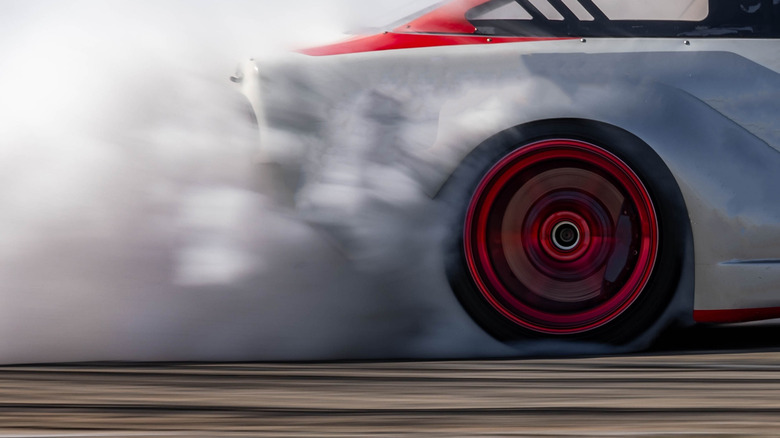How To Properly Do A Burnout (And Why You Should Probably Think Twice Before Doing It)
Even though it can be considered rude or illegal, sometimes it's just fun to do a burnout — it's loud, it's full of smoke, and it's fun. You can do a burnout in both a manual or automatic car pretty easily, although there are some specifics to keep in mind.
A burnout is simply when you stay in place while your car's wheels spin, creating friction between the rubber and pavement that produces the smoke. Burnouts started in the drag race scene and have branched out to become their own culture, including events. There's just something undeniably fun about hearing a car revving and seeing a cloud of smoke forming behind it.
If you're in a manual car:
- Turn on the car and put it in first gear, keeping the clutch pedal pushed in with your left foot
- Turn the parking brake off as well as the traction control and stability control systems
- With the clutch pedal pushed in, press the gas with your right foot and rev the engine to around 4,000-5,000 RPM (don't reach the redline)
- Take your left foot off the clutch and press the brake, simultaneously tapping the gas pedal
- Let go of the brake if you want to take off from there
And if you're in an automatic, you're not left out:
- Turn on the car
- Make sure all the traction control and stability control systems are off
- Hold down the brake completely with your left foot
- Use your other foot to slam down on the gas pedal
- Feather the brake pedal until you can feel and hear the wheels start to spin
- You'll release smoke as your tires spin in place until you let go of the brake
Should you do a burnout?
In short, no. While performing a burnout can be exhilarating, it's definitely not ever going to be recommended due to the legality of the act and how bad it is for your car. In the United States, doing a burnout on any public road or parking lot is considered illegal, usually carrying a charge of reckless driving. Private property has a bit more leniency, but you'll then need to check local regulations regarding burnouts. For example, burnouts are even mentioned in California's Vehicle Code 23103 that states it's reckless driving even on private property.
Even if you find a spot to legally perform a burnout, you may be at risk in other ways — mainly extreme wear and tear on your car. You can burn the car's clutch if you ride it at all, and wear out the brakes due to their extra work it takes to stop the spinning car from moving forward. Most commonly, a burnout will rapidly wear down your tires due to the fast spinning in place. If you want to perform a burnout, you're best off getting a drag race-friendly car and getting into the scene.

